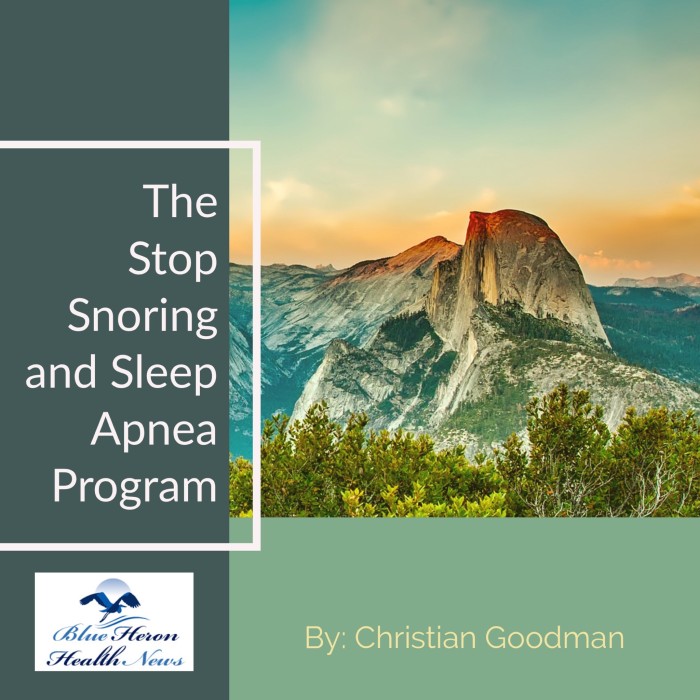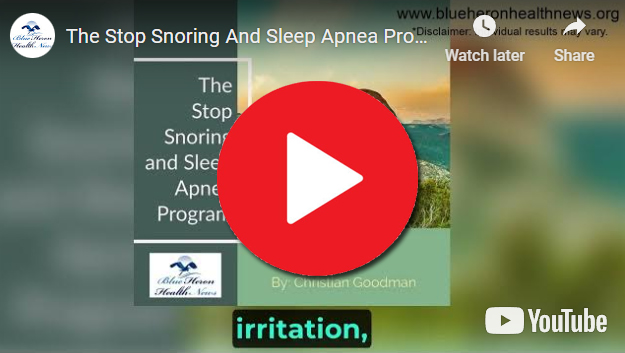
The Stop Snoring And Sleep Apnea Program™ a well-researched program created to help stop snoring and sleep apnea so that you can have a good night sleep. The techniques that you will learn from this program works immediately. It will only take you 3-7 minutes to perform these simple exercises that the author has recommended but the results that you will get will help you have a good night sleep as soon as tonight. Within a week, snoring will be a thing of the past.
How can one manage sleep apnea without a CPAP machine?
Managing sleep apnea without a CPAP (Continuous Positive Airway Pressure) machine is possible for some individuals, especially those with mild to moderate obstructive sleep apnea (OSA). Alternative treatments and lifestyle modifications can help reduce symptoms and improve sleep quality. Here are various strategies for managing sleep apnea without using a CPAP machine:
1. Weight Management
- Weight Loss: Losing weight is one of the most effective ways to manage sleep apnea, particularly for individuals who are overweight or obese. Excess weight, especially around the neck, can narrow the airway and increase the likelihood of airway obstruction during sleep. Even modest weight loss can significantly reduce the severity of sleep apnea symptoms.
- Healthy Diet and Exercise: Adopting a healthy diet and engaging in regular physical activity can support weight loss and overall cardiovascular health, which may improve sleep apnea.
2. Positional Therapy
- Sleep Position Adjustment: Sleeping on the back (supine position) can worsen sleep apnea because gravity causes the tongue and soft tissues to collapse backward, blocking the airway. Sleeping on the side (lateral position) helps keep the airway open and reduces the severity of sleep apnea symptoms.
- Positional Devices: There are special devices, such as positional sleep aids or anti-snoring pillows, that encourage side sleeping. Some people use positional therapy devices like a wedge pillow or a special belt worn around the waist to prevent rolling onto the back during sleep.
3. Oral Appliances
- Mandibular Advancement Devices (MADs): These custom-made devices are worn in the mouth like a sports mouthguard. They work by gently repositioning the lower jaw forward, which helps keep the airway open during sleep. MADs are effective for people with mild to moderate obstructive sleep apnea and can reduce snoring as well.
- Tongue-Retaining Devices: Another type of oral appliance is a tongue-retaining device, which holds the tongue in place to prevent it from blocking the airway. These devices can be an alternative to CPAP for people who prefer not to use a machine.
- Consultation with a Dentist or Orthodontist: Oral appliances must be fitted by a dental professional to ensure they are comfortable and effective for managing sleep apnea.
4. Lifestyle Modifications
- Avoid Alcohol and Sedatives: Alcohol, sedatives, and other substances that relax the muscles can make sleep apnea worse by causing the muscles in the throat to relax and collapse, leading to airway obstruction. Avoiding these substances, especially before bedtime, can help reduce symptoms.
- Quit Smoking: Smoking can contribute to airway inflammation and swelling, which exacerbates sleep apnea. Quitting smoking can reduce airway irritation and improve overall respiratory health.
- Maintain a Regular Sleep Schedule: Ensuring that you get enough sleep and maintaining a consistent sleep schedule can help reduce the severity of sleep apnea. Irregular sleep patterns can exacerbate apnea episodes.
5. Exercise and Strengthening Exercises
- Regular Aerobic Exercise: Engaging in regular physical activity, even without significant weight loss, has been shown to reduce the severity of sleep apnea. Exercises like walking, swimming, cycling, or jogging help improve cardiovascular fitness, reduce inflammation, and improve overall sleep quality.
- Throat and Tongue Exercises (Oropharyngeal Exercises): Strengthening the muscles of the upper airway through specific exercises (called myofunctional therapy) can help prevent airway collapse during sleep. These exercises involve repetitive movements of the tongue, soft palate, and throat muscles. Some studies suggest that these exercises can reduce the severity of OSA.
- Example exercises include:
- Repeatedly pushing the tongue against the roof of the mouth.
- Practicing deep breathing while holding the tongue in place.
- Performing exercises that strengthen the muscles in the soft palate and throat, such as singing or blowing up a balloon.
- Example exercises include:
6. Nasal Treatments
- Nasal Decongestants or Sprays: If nasal congestion is contributing to sleep apnea, using nasal sprays (such as saline or steroid sprays) or decongestants can help keep the nasal passages clear, making breathing easier during sleep.
- Nasal Dilators: These are devices that help open the nostrils and improve airflow through the nasal passages. Nasal dilators, such as Breathe Right strips, can be used to reduce snoring and mild obstructive sleep apnea.
- Treating Allergies: For individuals with nasal allergies, managing allergic symptoms (e.g., with antihistamines or nasal corticosteroids) can reduce nasal obstruction and improve sleep quality.
7. Surgery
- Uvulopalatopharyngoplasty (UPPP): This is a surgical procedure in which excess tissue is removed from the back of the throat (including the uvula and soft palate) to widen the airway. It is typically considered for individuals with severe sleep apnea who are not candidates for CPAP or other treatments.
- Genioglossus Advancement: This surgery repositions the muscle that controls the tongue to prevent it from collapsing into the airway during sleep.
- Nasal Surgery: If nasal obstructions (such as a deviated septum) are contributing to sleep apnea, surgery to correct the nasal passages can improve airflow and reduce symptoms.
- Tonsillectomy or Adenoidectomy: In some cases, removing the tonsils or adenoids can help alleviate airway obstruction in people with sleep apnea, particularly in children or adults with enlarged tonsils.
8. Hypoglossal Nerve Stimulation (Inspire Therapy)
- Inspire Therapy: This is a newer treatment for sleep apnea that involves an implanted device that stimulates the hypoglossal nerve, which controls tongue movement. The stimulation prevents the tongue from collapsing into the airway during sleep. It is an alternative for individuals who cannot tolerate CPAP and have moderate to severe OSA.
- How It Works: The device is implanted in the chest and activated during sleep. It monitors breathing patterns and delivers mild electrical stimulation to keep the airway open.
9. Weight Loss Surgery
- Bariatric Surgery: For individuals with severe obesity and sleep apnea, bariatric surgery (such as gastric bypass or sleeve gastrectomy) can be an option. Significant weight loss after surgery can reduce or even eliminate sleep apnea in many cases by decreasing fat deposits around the airway.
10. Improve Sleep Environment
- Elevate the Head of the Bed: Sleeping with the head slightly elevated (by using an adjustable bed or a wedge pillow) can help reduce airway obstruction by preventing the soft tissues from collapsing into the throat.
- Improve Sleep Hygiene: Maintaining a sleep-friendly environment (cool, dark, and quiet) can help improve overall sleep quality, reducing the frequency of apnea episodes.
Conclusion:
While CPAP is the most common and effective treatment for moderate to severe obstructive sleep apnea, many alternatives can help manage sleep apnea, particularly for those with mild to moderate cases or those who cannot tolerate CPAP. Weight management, positional therapy, oral appliances, lifestyle changes, and in some cases, surgical interventions can all contribute to improving sleep quality and reducing the symptoms of sleep apnea. It’s essential to consult with a healthcare provider to determine the most appropriate treatment plan based on individual needs and the severity of the condition.

The Stop Snoring And Sleep Apnea Program™ a well-researched program created to help stop snoring and sleep apnea so that you can have a good night sleep. The techniques that you will learn from this program works immediately. It will only take you 3-7 minutes to perform these simple exercises that the author has recommended but the results that you will get will help you have a good night sleep as soon as tonight. Within a week, snoring will be a thing of the past.